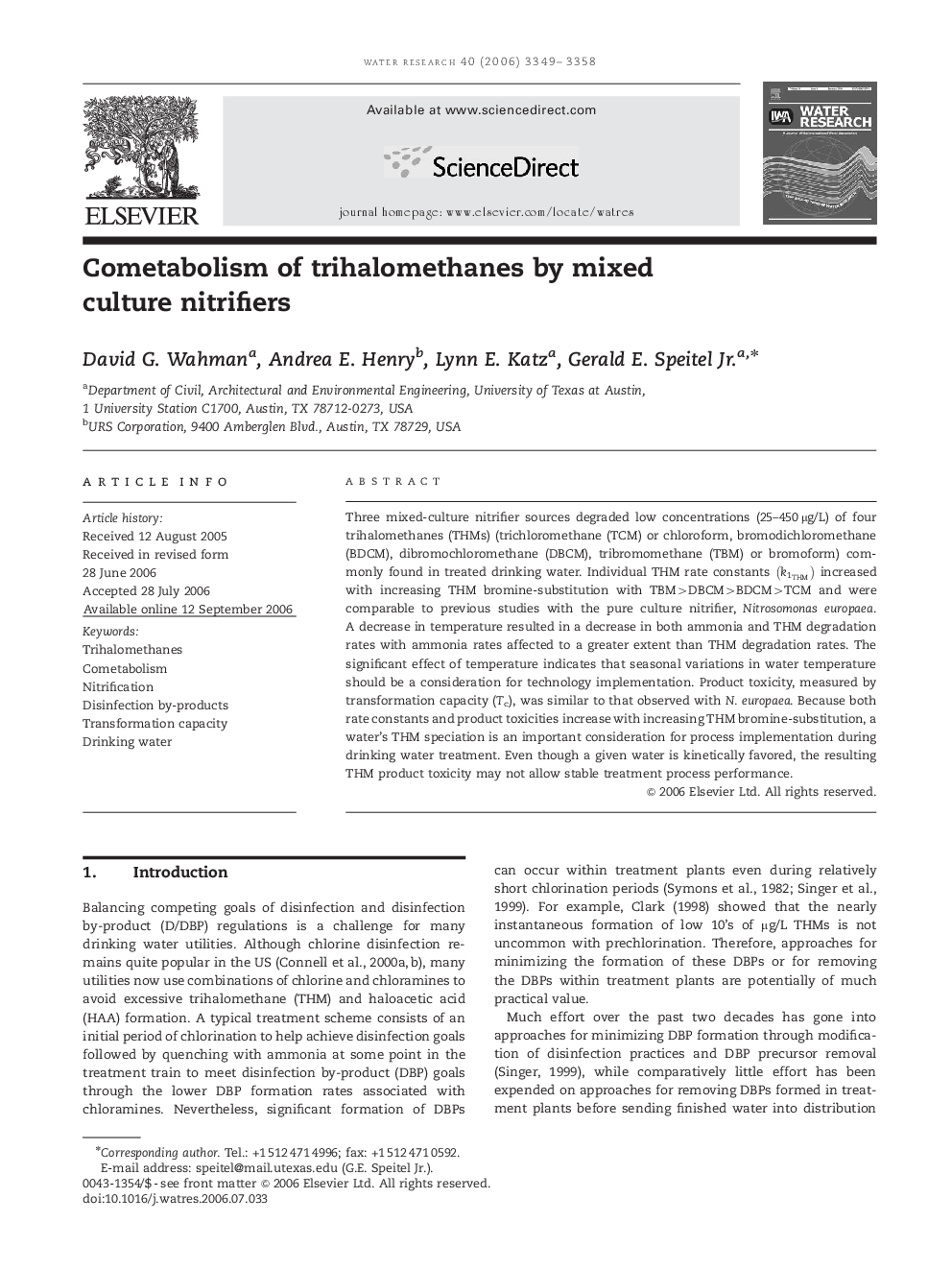| Article ID | Journal | Published Year | Pages | File Type |
|---|---|---|---|---|
| 4485603 | Water Research | 2006 | 10 Pages |
Three mixed-culture nitrifier sources degraded low concentrations (25–450 μg/L) of four trihalomethanes (THMs) (trichloromethane (TCM) or chloroform, bromodichloromethane (BDCM), dibromochloromethane (DBCM), tribromomethane (TBM) or bromoform) commonly found in treated drinking water. Individual THM rate constants (k1THM)(k1THM) increased with increasing THM bromine-substitution with TBM>DBCM>BDCM>TCM and were comparable to previous studies with the pure culture nitrifier, Nitrosomonas europaea. A decrease in temperature resulted in a decrease in both ammonia and THM degradation rates with ammonia rates affected to a greater extent than THM degradation rates. The significant effect of temperature indicates that seasonal variations in water temperature should be a consideration for technology implementation. Product toxicity, measured by transformation capacity (Tc), was similar to that observed with N. europaea. Because both rate constants and product toxicities increase with increasing THM bromine-substitution, a water's THM speciation is an important consideration for process implementation during drinking water treatment. Even though a given water is kinetically favored, the resulting THM product toxicity may not allow stable treatment process performance.
